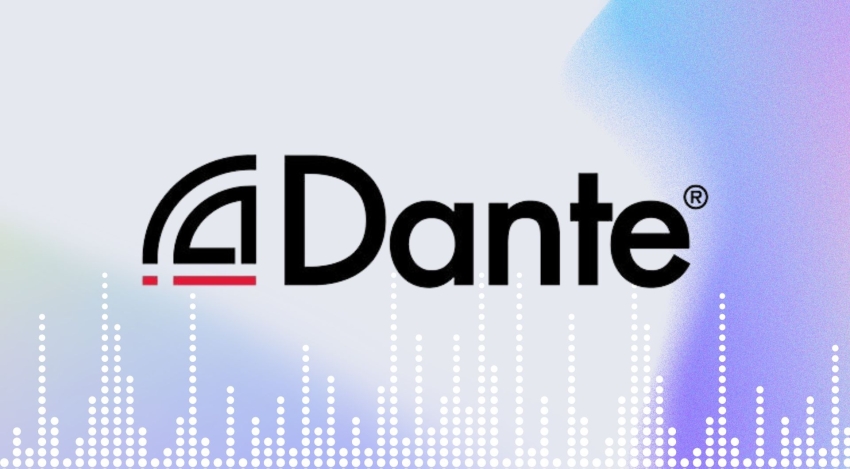

The DANTE protocol (Digital Audio Network Through Ethernet) is a combination of software, hardware, and network protocols that provides uncompressed, multi-channel, low-latency digital sound. It is synchronized over a standard Ethernet network using layer 3 IP packets. Developed by Audinate, it is primarily used in professional audio environments, such as auditoriums or meeting rooms.
DANTE combines hardware and software to transport uncompressed digital audio with minimal latency. Audinate, the company behind DANTE, licenses this system to other manufacturers.
The digitally transmitted audio signal is uncompressed and can be sampled at 44.1 kHz, 48 kHz, 88.2 kHz, 96 kHz, 176.4 kHz, or 192 kHz in 16-bit, 24-bit, or 32-bit modes. The issues of traditional analog signals do not exist: no interference, no crosstalk between cables, and no signal degradation over long distances.
Latency depends on the number of switches in the network:
1 switch (very small network): 0.15ms
3 switches (small network): 0.25ms
5 switches (medium network): 0.5ms
10 switches (large network): 1ms
More than 10 switches (very large network): 5ms
Audio signals are transmitted synchronously, so all receiving devices of the same audio stream receive it simultaneously.
Based on industry standards, DANTE has been adopted by many pro-audio audiovisual solution manufacturers thanks to its total interoperability. Hundreds of DANTE-compatible products are available, allowing the combination of devices from multiple manufacturers without any issues..jpg)
DANTE replaces expensive analog cabling with a simple, low-cost CAT5e, CAT6, or fiber optic cable. DANTE integrates media and control for the entire system over a single standard IP network.
The configuration of DANTE networks is simple, even for those with little knowledge of computer networks. DANTE automatically manages technical complexities.
With DANTE Controller, you can easily rename devices, control sampling rates, and set device latencies. Once configured, the computer running DANTE Controller can be removed.
DANTE Controller offers real-time diagnostic tools, monitoring latency, clock, packet errors, and bandwidth usage.
Many DANTE devices support redundancy, providing a secondary physical network to avoid any audio interruption in case of a problem.
DANTE multiplexes audio channels before transmission, allowing a Gigabit Ethernet network to carry up to 512 channels in each direction at a sampling rate of 48kHz. The sampling rate can reach 192kHz with a maximum depth of 32 bits.
Use CAT5E or CAT6 cables for reliable connections, with a maximum length of 100m for copper cables.
A Gigabit switch is recommended, especially for networks with more than 32 channels. QoS (Quality of Service) is essential to prioritize synchronization and audio packets.
Green Ethernet technology can cause synchronization interruptions. It is recommended to disable it for ports used by DANTE.
For simple setups, such as connecting a console to a computer, DANTE is very easy to implement.
For more complex networks, network computing skills are necessary to optimize configuration and data routing.
The DANTE protocol is a powerful solution for transporting digital audio over standard IP networks. Whether for simple configurations or complex networks, DANTE offers exceptional audio quality, low latency, and great flexibility. For successful installation and integration of audio systems in your rooms and auditoriums, follow these tips. If you are considering choosing an audiovisual integrator, you can learn more about selection criteria here and find a list of recommended (french) audiovisual integrators.
Happy reading.

